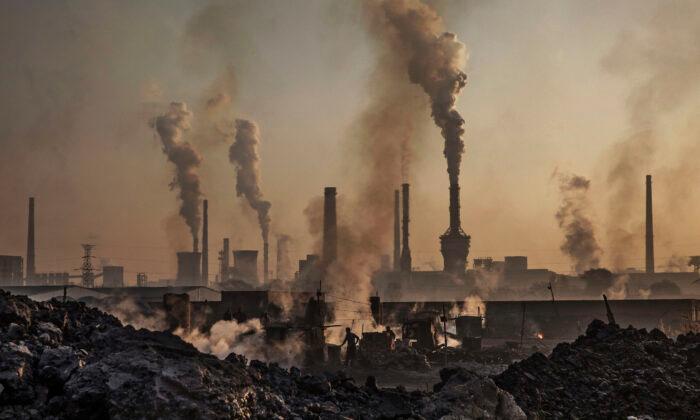China’s factory-gate inflation index, also known as the producer price index (PPI), rose 10.7 percent—the highest level on record—in September from a year earlier, partly driven by soaring energy prices, and potentially adding to global inflation pressure.
The National Bureau of Statistics (NBS) on Oct. 14 released the figure that measures price fluctuations of goods at the factory gate.
The index marked its biggest rise since the bureau started compiling the data in 1996. Economists in a Reuters poll had expected an increase of 10.5 percent, after a 9.5 percent rise in August.
The rising costs of raw material prices, including crude oil, coal, and metals, are major reasons for the increase, along with China’s large-scale power cuts.
Several Apple and Tesla suppliers and companies in the chemicals industry suspended production, which also caused the prices of raw materials to soar.
The outages are caused by a combination of the surging price of coal and supply shortages.
Data on Oct. 14 show consumer inflation remains low, increasing just 0.7 percent in September from a year earlier, amid weak demand for goods such as clothing and household appliances, as well as a decline in volatile food prices.
But Chinese businesses have so far been reluctant to pass on the higher costs to local customers due to a lack of demand.
Tang Jianwei, chief macroeconomics analyst at BOCOM, said China’s mixed inflation could see policymakers treading a fine line.
“On one side, the relatively weak domestic demand requires a certain degree of easing to support a recovery in demand, and on the other side, record high PPI restricts the room of easing,” he said.
Global commodity prices have also surged in recent months, driven by increased demand for coal and metals.
“Bottlenecks in the supply side continue to exist and the demand was weak so producers cannot pass through the costs. This is a painful process the Chinese economy has to go through,” said Zhou Hao, senior EM economist at Commerzbank.
Meanwhile, the price of thermal coal used to generate electricity in China surged to a fresh high on Oct. 13, adding more pressure on the regime in Beijing as it attempts to tackle a continuing power crisis.
Since more than two-thirds of the country’s electricity comes from burning coal, a power crunch has further driven up the price of coal—brought on by a coal shortage.
Thermal coal futures on the Zhengzhou Commodity Exchange reached a record high of 1,640 yuan ($254.44) per metric ton in Oct. 13 trading, having surged almost three-fold year-to-date. The price jump comes after the country’s key coal mining regions were hit by torrential rain last week, adding further strain on the country’s tight coal supply.
Hsieh Chin-ho, a Taiwan-based economic commentator, told NTD that the power crisis will likely be a long-term issue for the country.
The Chinese government said last week that it will allow coal-fired power prices to fluctuate by up to 20 percent from base levels, a loosening of previous limits.






Friends Read Free